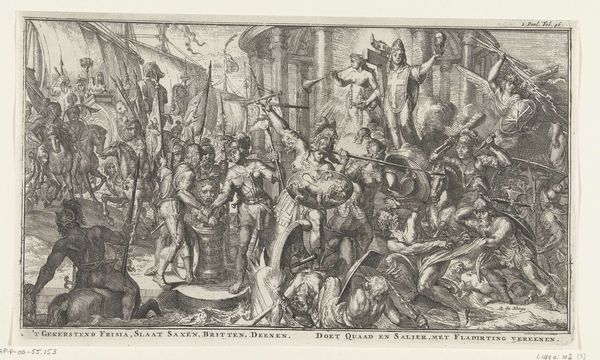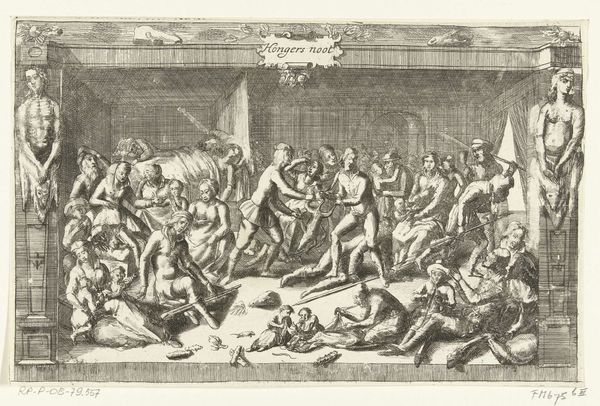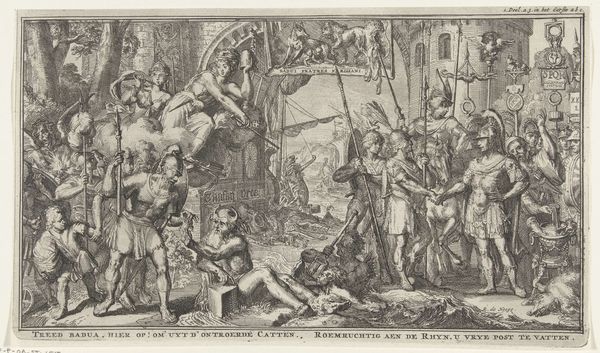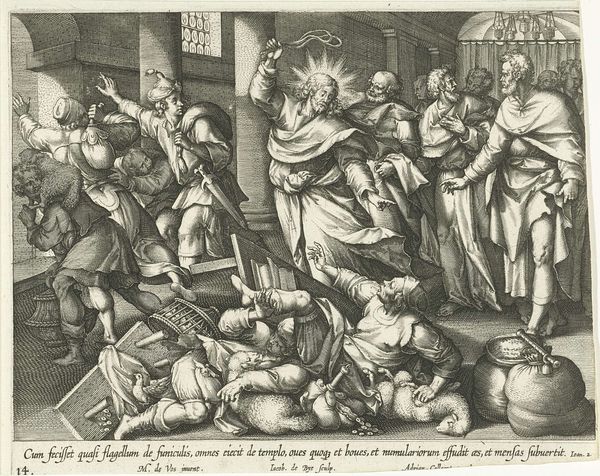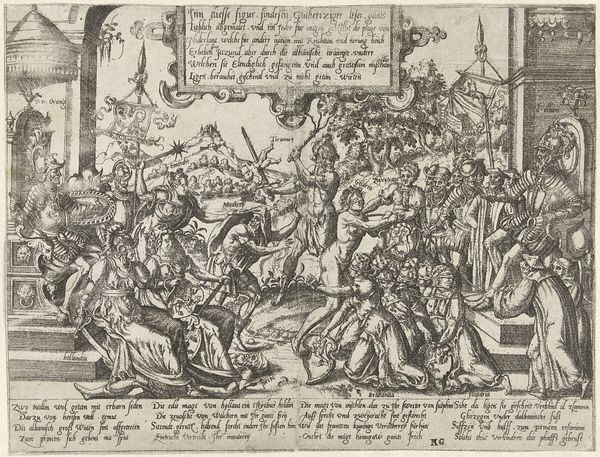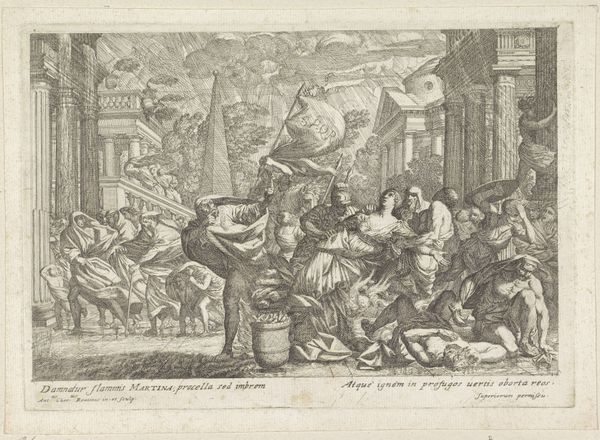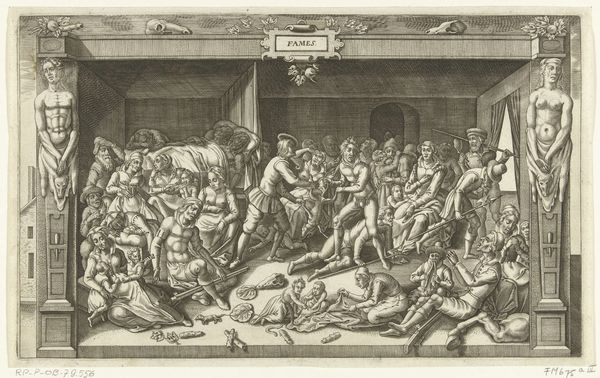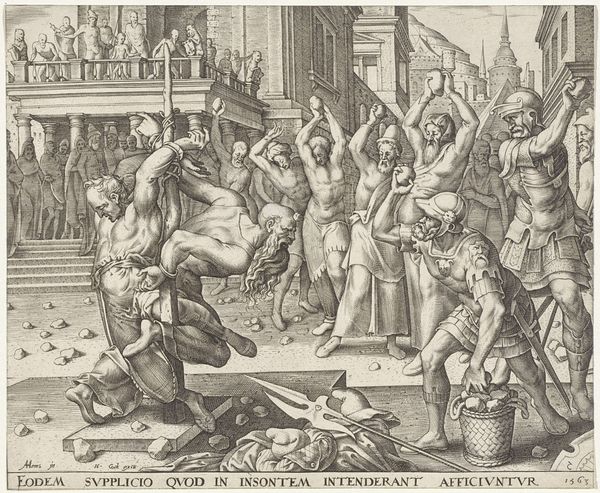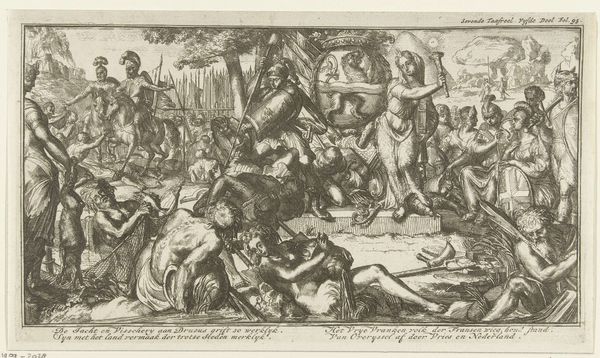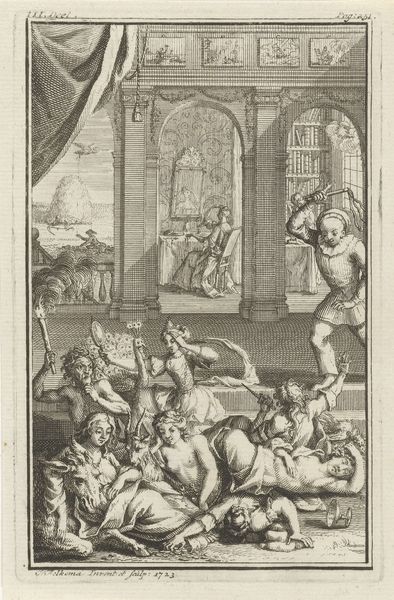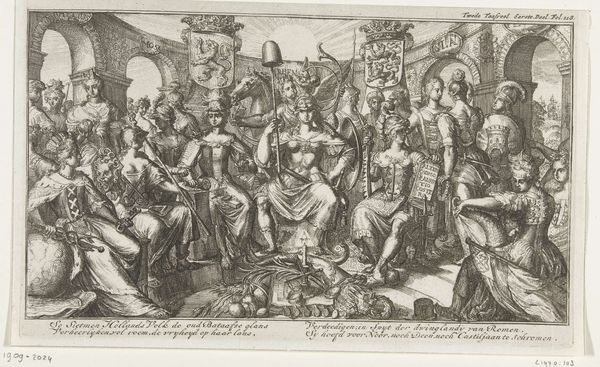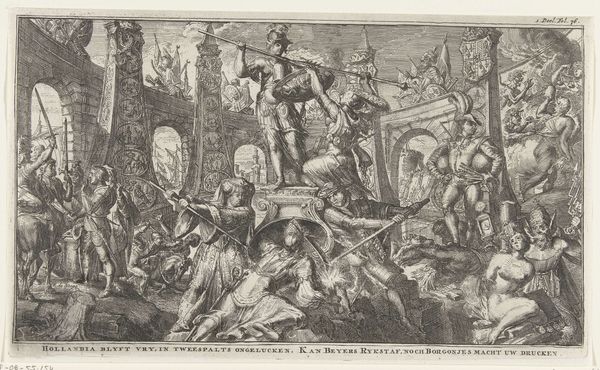
print, ink, engraving
#
allegory
#
narrative-art
#
baroque
#
pen drawing
#
dutch-golden-age
# print
#
pen illustration
#
pen sketch
#
figuration
#
ink line art
#
ink
#
line
#
history-painting
#
engraving
Dimensions: height 173 mm, width 285 mm
Copyright: Rijks Museum: Open Domain
Curator: This engraving, created by Romeyn de Hooghe between 1705 and 1707, is titled "Allegorie op de Unie van Utrecht, 1579," or Allegory of the Union of Utrecht. It is currently housed in the Rijksmuseum. Editor: My initial impression is one of dramatic tension. The chaotic foreground clashes sharply with the more composed scene in the background. The contrast makes the work somewhat unsettling. Curator: Indeed, de Hooghe masterfully uses the foreground to represent the strife and struggle that led to the Union of Utrecht. This union was a pivotal moment in Dutch history, marking a unified front against Spanish rule. Editor: Look at the contrasting line work. The fine, precise lines depicting the seated figures in the background are quite different from the more frenzied, sketch-like quality used to illustrate the figures in the foreground. Is this deliberate? Curator: Absolutely. De Hooghe intentionally employs this contrast. The foreground depicts the tumultuous struggles, full of violence and despair, while the background shows the result of unity – a gathering of dignified representatives sealing their alliance. The print highlights the socio-political shift. Editor: There's a powerful dynamic between order and chaos. The allegorical figures are interesting. Who are these protagonists supposed to be? Curator: They represent cities and provinces. You see examples such as Leiden, represented by the virgin holding a shield. Note how those loyal to the Union actively fight to protect the provinces from oppression. This work highlights the birth of the Dutch Republic and uses these classical personifications to drive that home. Editor: I also note a specific absence of color. This adds to the sense of urgency, or perhaps the work's somber tone. In its starkness, there is also remarkable clarity of form. The message seems all the more direct for that lack. Curator: I agree. This piece speaks to the turbulent birth of a nation. We're drawn into that crucial moment of the Union. It reflects how art was intertwined with statecraft, serving as propaganda. Editor: Considering it from a formal standpoint, I really notice now the stark contrast enhances the depth. The texture created with the engraving gives life to the scene. Curator: I leave here with a fresh perspective, recognizing the pivotal function such artwork played. Editor: Indeed, this exploration has unveiled the intricate ways an image represents historical narratives.
Comments
No comments
Be the first to comment and join the conversation on the ultimate creative platform.

